


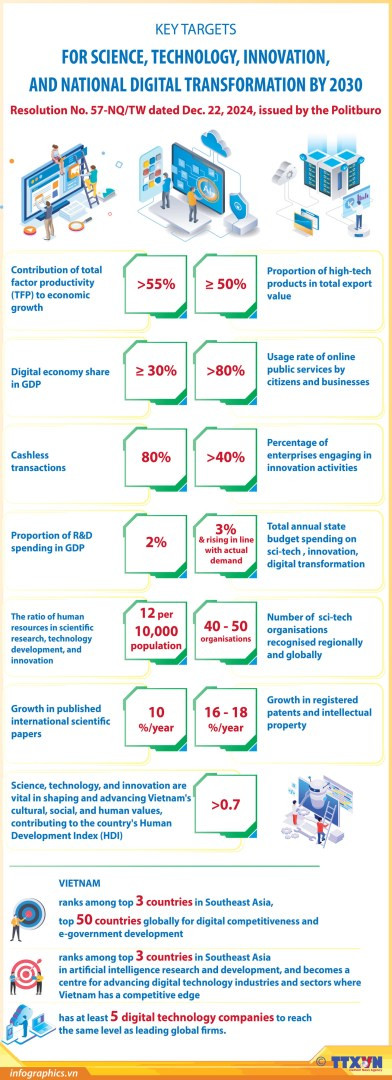
Recognising the importance of this resolution, Party General Secretary To Lam has assumed the role of head of the Central Steering Committee for the Development of Science, Technology, Innovation and Digital Transformation.
From late January to early March 2025, he presided over two key committee meetings, underscoring the Party’s commitment to prioritizing science, technology, innovation, and digital transformation as essential tools for seizing opportunities and overcoming challenges in the country’s development path.
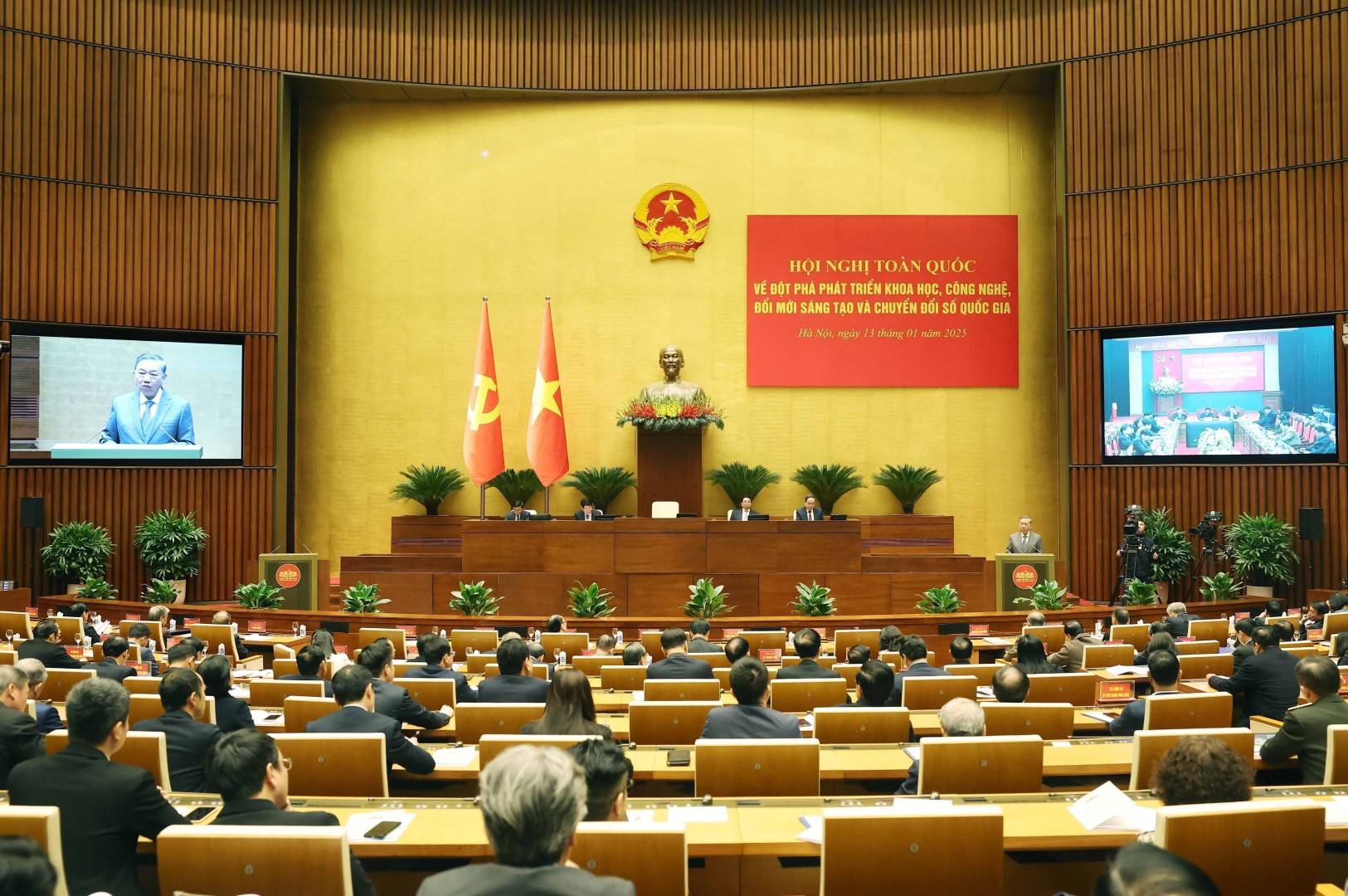
(Photo: VNA)
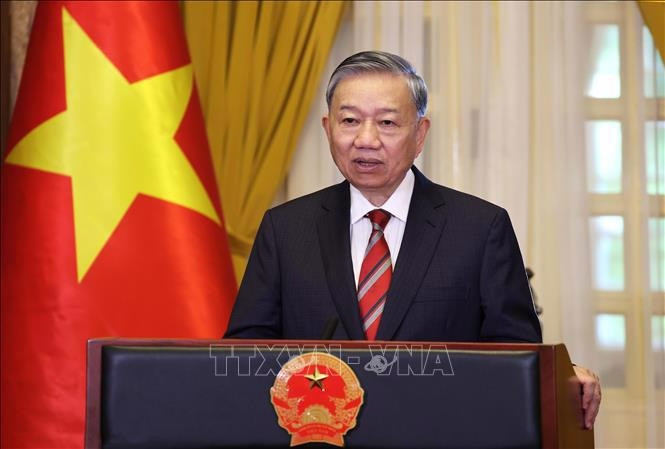
He called for the integration of the resolution’s implementation with the organisational restructuring of government bodies, particularly in line with Resolution No. 18 and the directions of the Party Central Committee and Politburo.
This integration must be grounded in the enhanced application of science, technology, innovation, and digital transformation to ensure leaner, more effective, and efficient operations.
The General Secretary further directed the construction and completion of digital infrastructure and platforms, particularly the National Data Centre, the National Business Database, and the National Land Database.
He stressed the importance of developing high-tech zones and advancing strategic technologies such as artificial intelligence (AI), big data, and semiconductors.
A national technology exchange platform will also be established, and the replication and application of successful science, technology, and digital transformation solutions will be actively encouraged.
At least 3% of the 2025 state budget will be allocated to science, technology, innovation, and digital transformation, with plans to raise this figure to 2% of GDP over the next five years.
The strategy also includes expanding the network of national research and testing centres and key laboratories focused on strategic technologies. Incentives and supportive policies will be introduced to encourage individuals and organisations to participate in these activities.
The institutional framework and establishment of a science and technology innovation investment fund must be finalised by the second quarter of 2025.
Artificial intelligence as a breakthrough frontier
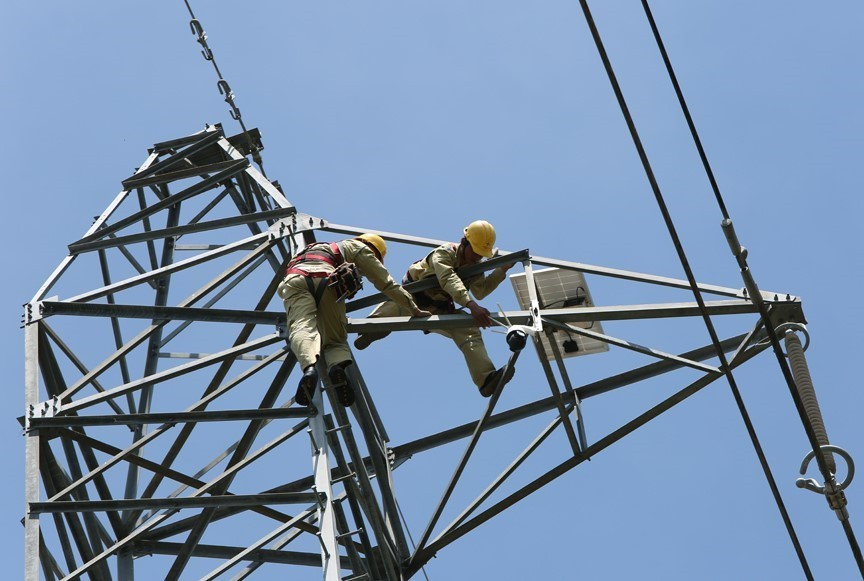
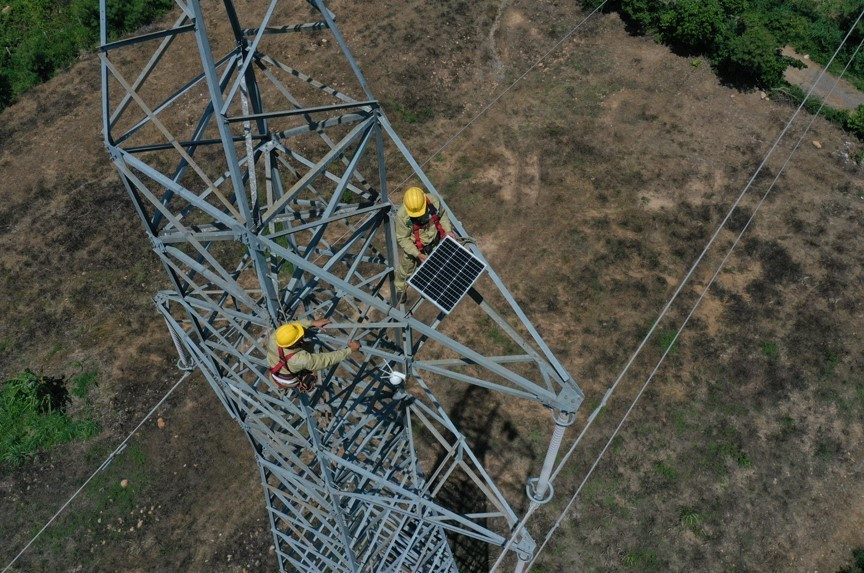
(Photo: VNA)
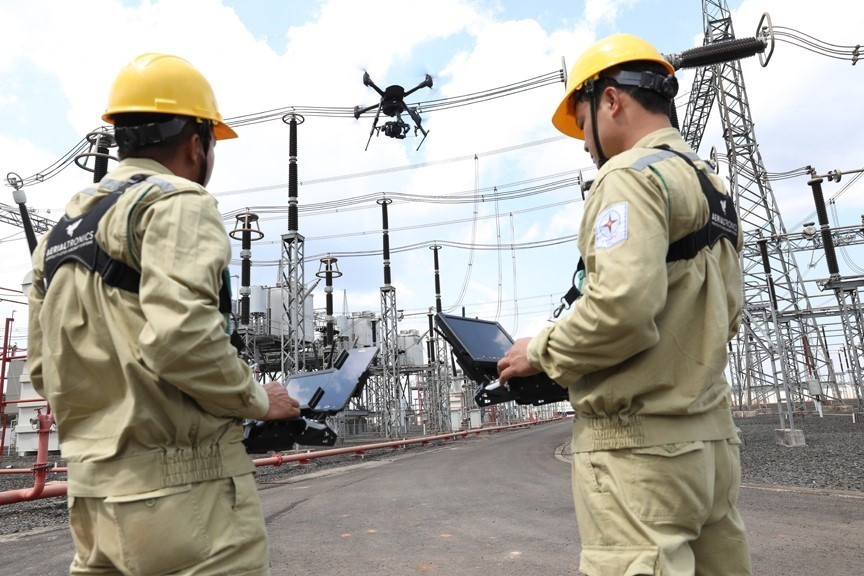
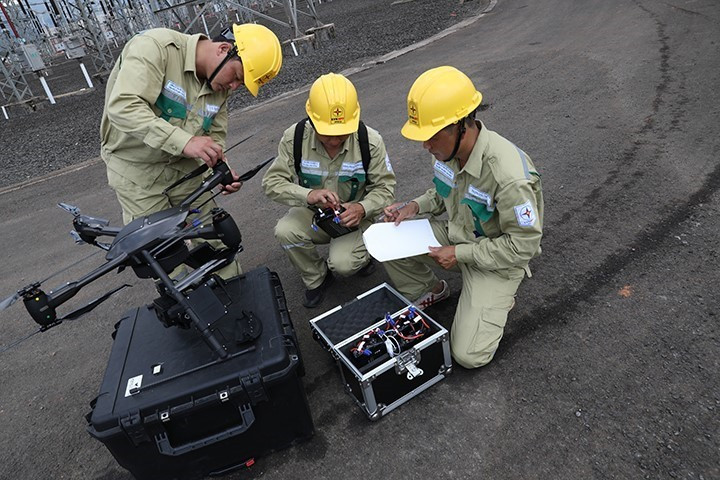
(Photo: VNA)
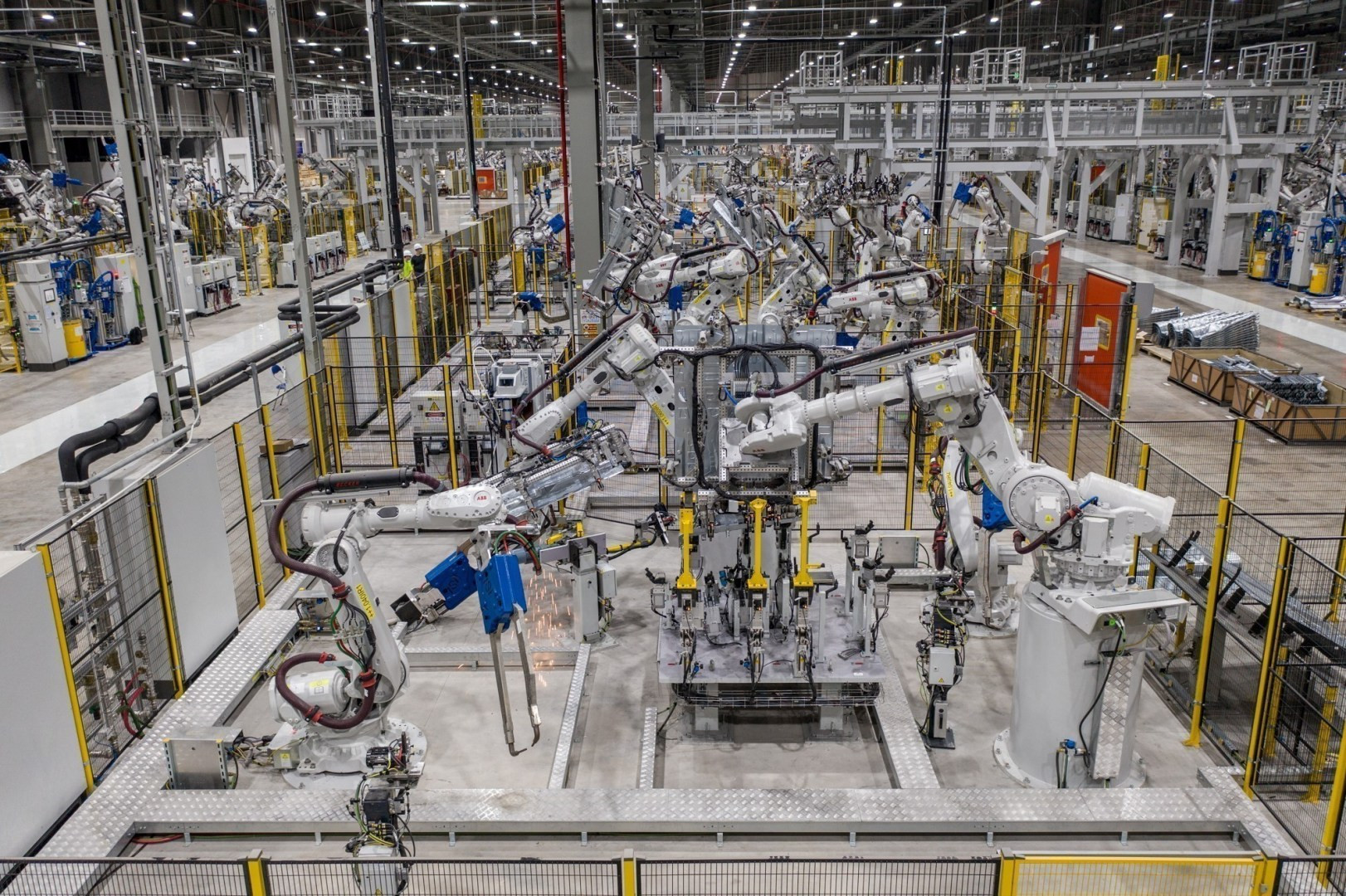
(Photo: VNA)
General Secretary To Lam has made clear directions to complete the digital infrastructure and ensure nationwide 5G broadband mobile coverage, alongside accelerating satellite internet deployment.
AI is a breakthrough, frontier technology, he said, calling for the prompt development and issuance of a strategic technology list to be completed in Q2 2025.
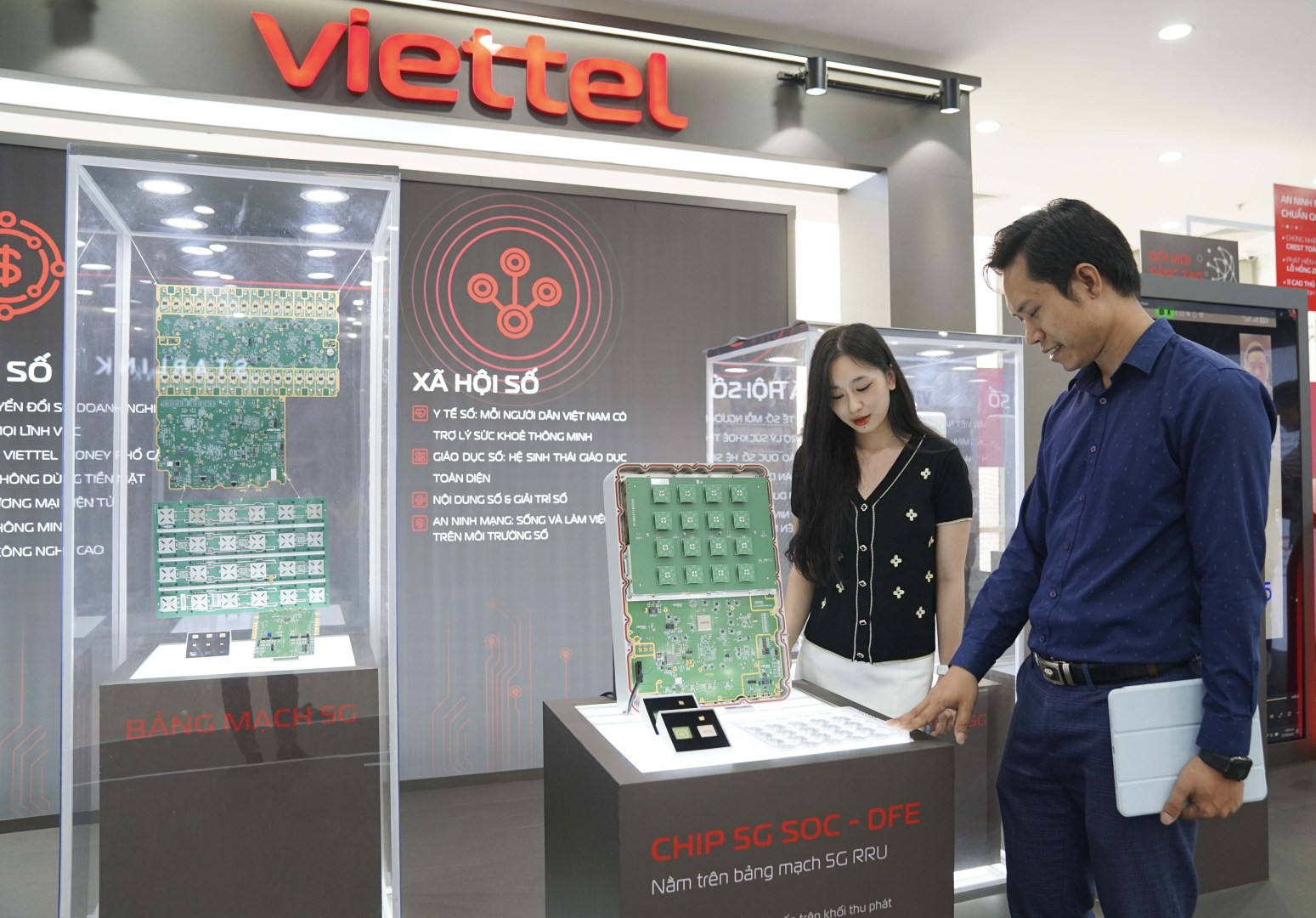

(Photo: VNA)
He also called for concentrated research and development efforts in core technologies and next-generation electronic devices integrating specialised chips, particularly in AI and Internet of Things (IoT). This includes investing in semiconductor R&D centres and establishing shared research and laboratory infrastructure.
The National Data Strategy must be reviewed and updated by Q2, while Q3 will mark the deadline for the digitalisation of internal administrative processes, public service records, and citizen/business-related documentation, ensuring 100% reuse of digitised data to reduce bureaucratic procedures and compliance costs.
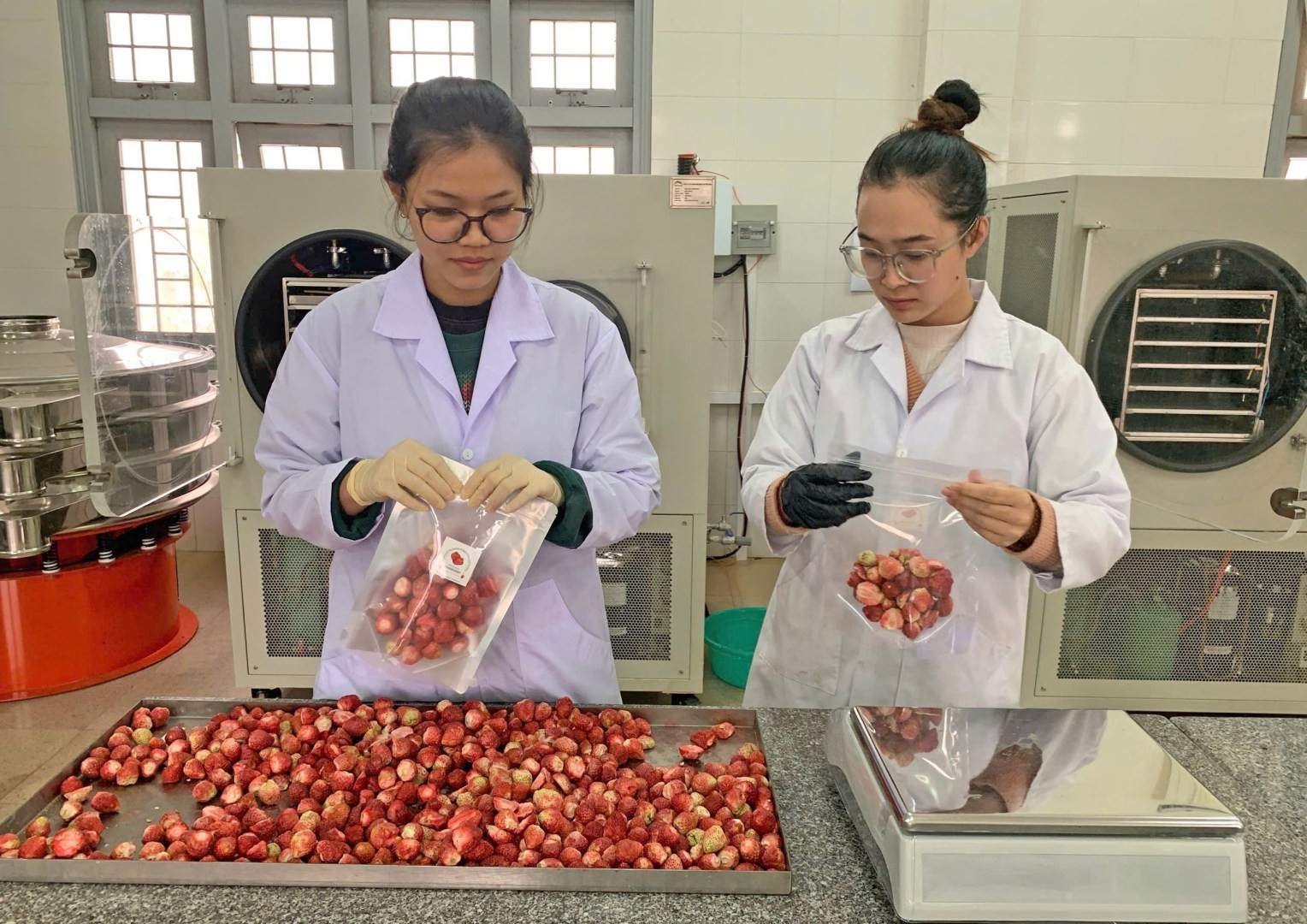


Students from the Faculty of Agriculture and Forestry, Da Lat University, conduct hands-on practice in a laboratory applying drying technologies to produce high-value products. (Photo: VNA)
“In 2025, several digital applications will be deployed to enhance governance and public services,” said the General Secretary. “These include completing 61 utilities on the VNelD platform to support socio-economic development, innovation, and crime prevention. It also includes the expansion of automated immigration checkpoints using advanced technologies at all airports; and rolling out contactless fee collection systems in urban bus and parking stations to improve traffic management and promote urban civility.”
The Party leadership has instructed the Government to design mechanisms and policies to attract and develop high-quality human resources in science, technology, innovation, and digital transformation. Universities are tasked with accelerating the training of skilled personnel in these fields, and pilot models linking universities, research centres, and production facilities will be promoted.
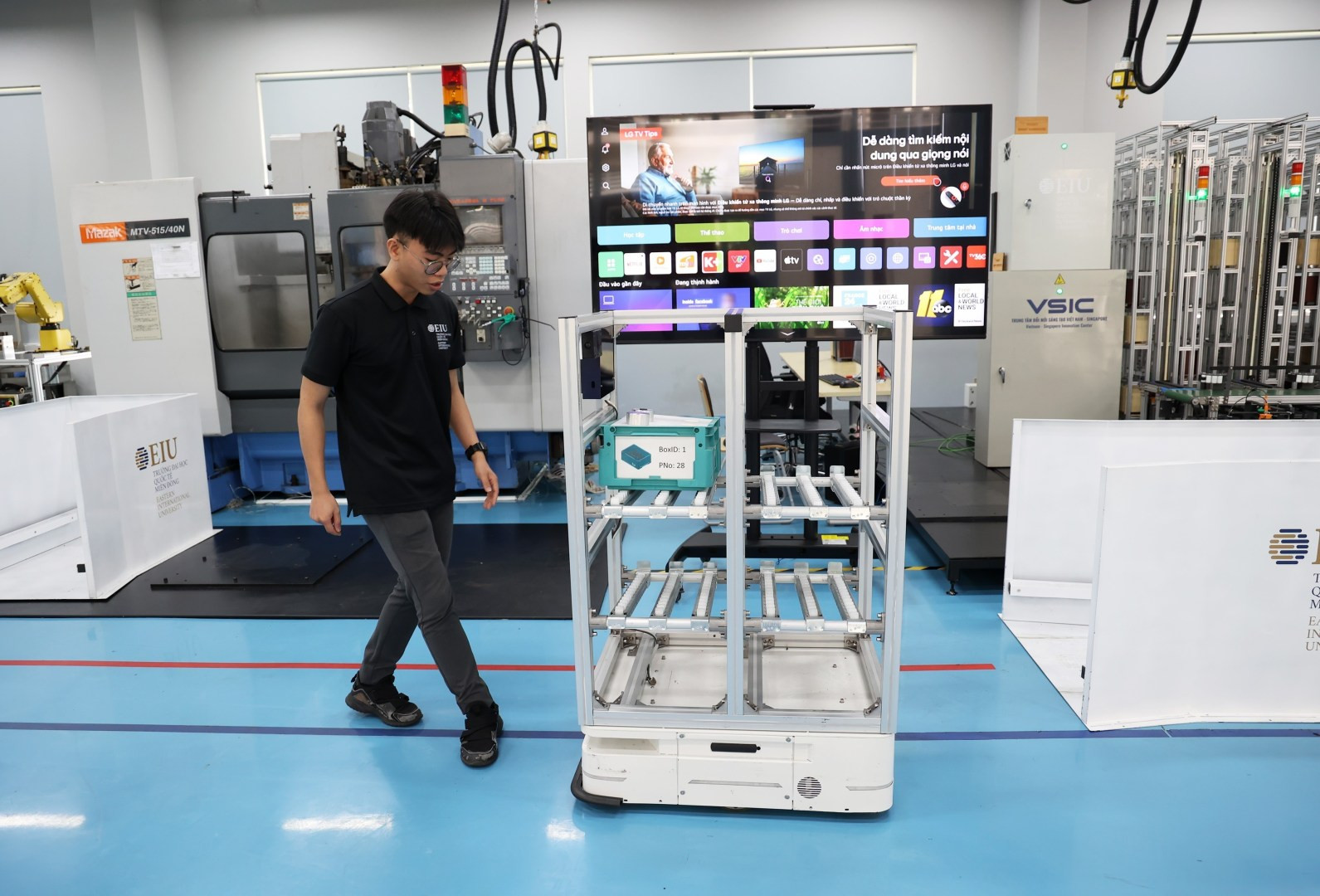
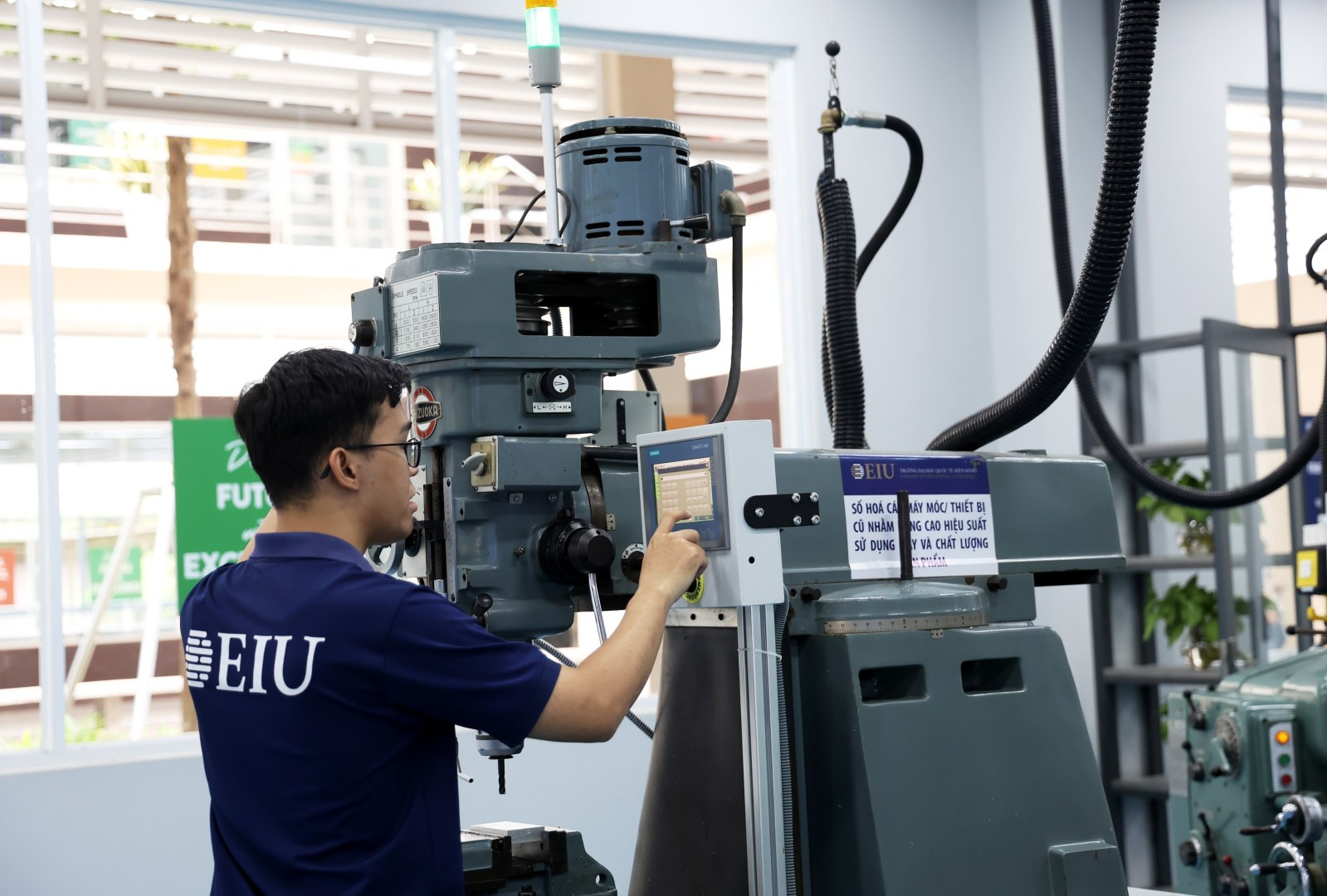
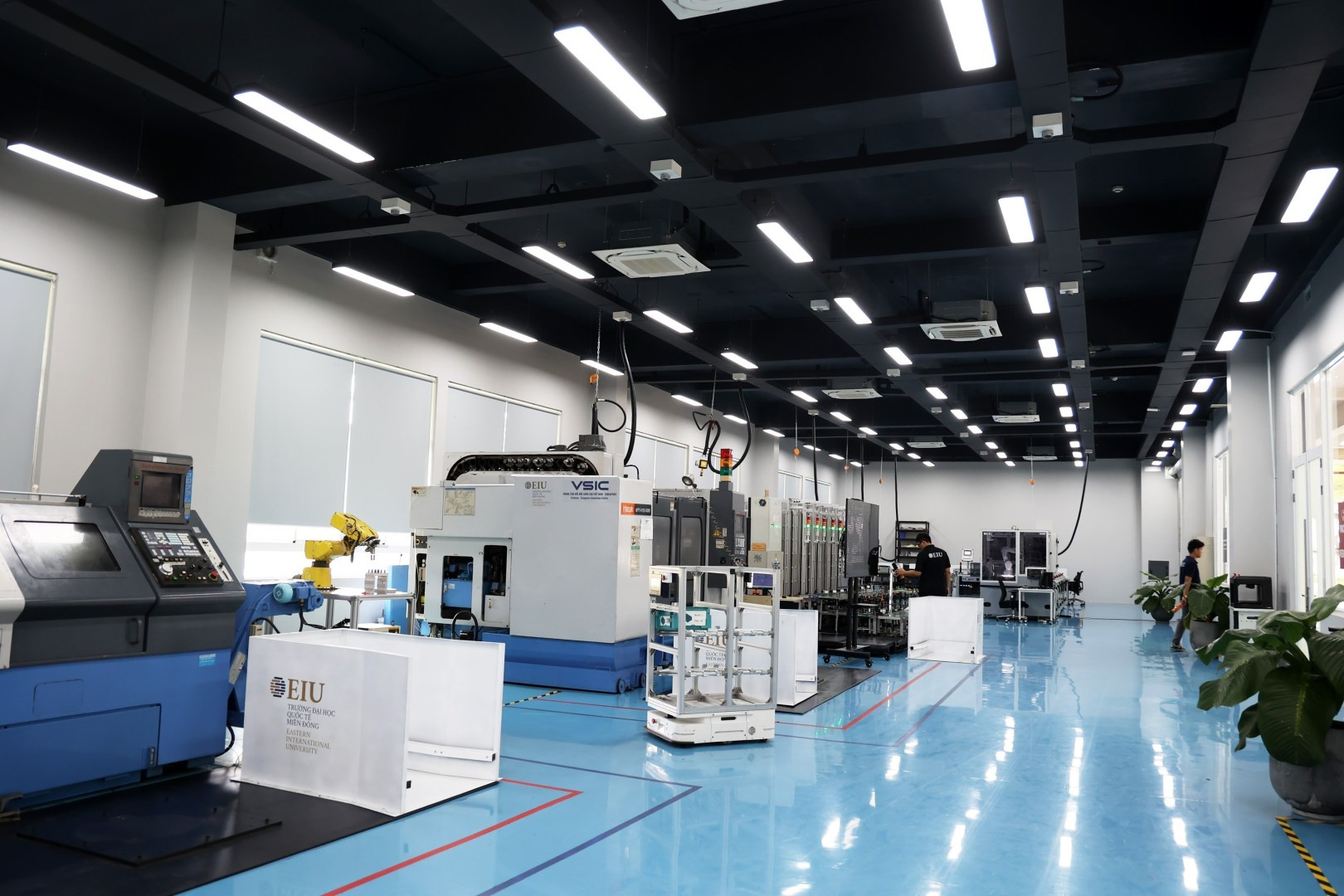
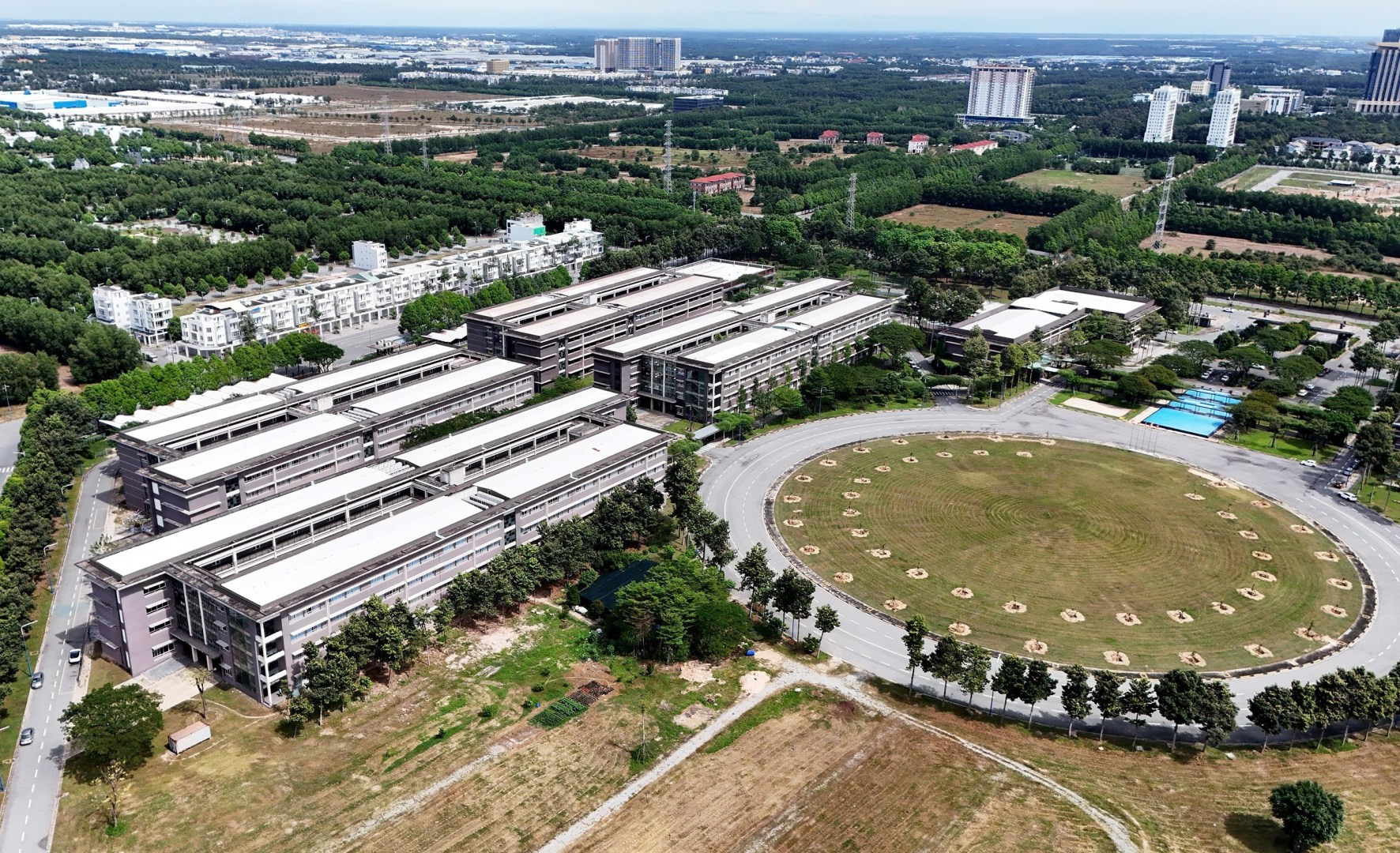
Eastern International University (EIU) in Binh Duong province plays a key role in developing a high-tech workforce for the Southeast region. (Photo: VNA)

Therefore, to achieve the goals and targets outlined in the 2021–2030 National Development Strategy, and to mark the centenaries of both the founding of the Party and the nation, Vietnam must pursue breakthroughs, placing science, technology, innovation, and digital transformation at the core. This is the essential condition and a rare opportunity for Vietnam to achieve prosperity and strength, he noted./.VNA